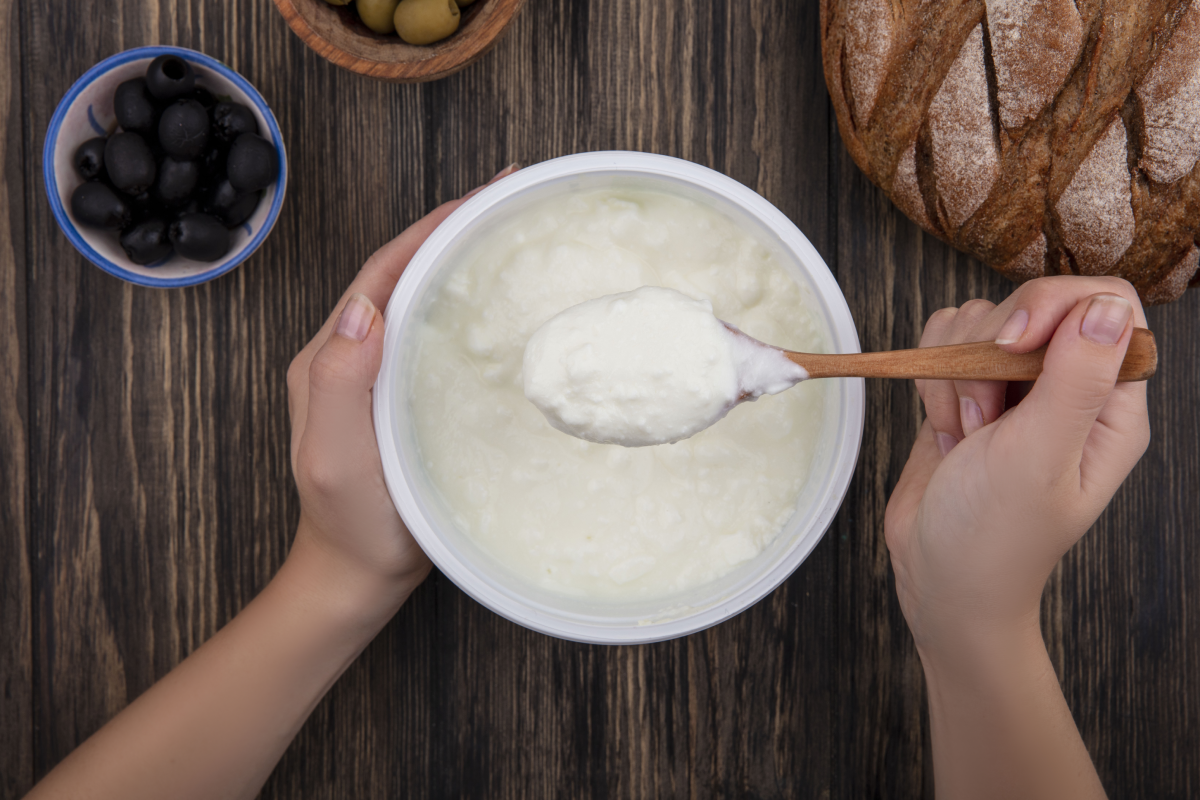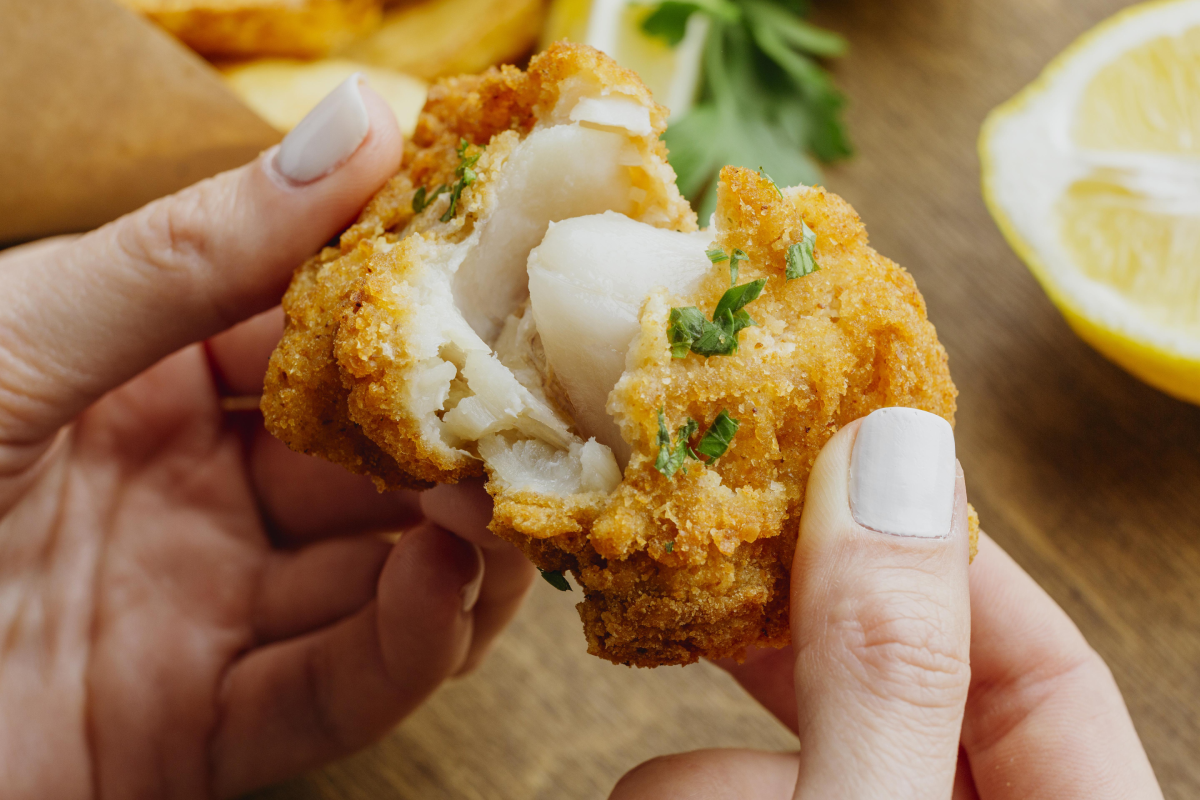Introduction
Ah, the eternal quest for the perfect fried chicken! It’s a journey filled with trials, triumphs, and the occasional culinary curveball. Today, we’re tossing another ingredient into the mix, asking the age-old (or perhaps not so age-old) question: Can I use yogurt instead of buttermilk for fried chicken?
Buttermilk, with its rich history and tangy profile, has long been the secret weapon in creating that crave-worthy crust and tender, juicy meat. Yet, what if, in a twist of fate or an empty fridge, you find yourself buttermilk-less? Enter yogurt, a dairy alternative that’s not only versatile but may just have the chops to challenge buttermilk’s throne.
This exploration isn’t just about substitution; it’s about revolutionizing the way we think about marinades and maybe, just maybe, enhancing our fried chicken game. So, buckle up, culinary adventurers, as we embark on this tasty expedition, unraveling the mysteries of marinades, and discovering if yogurt can truly be the buttermilk of the 21st century.explore “The Ultimate Guide to Making Fried Chicken Without Buttermilk” for comprehensive insights.
Understanding Buttermilk and Its Role in Fried Chicken
Dive into the creamy depths of buttermilk, and you’ll find a concoction that’s more than just a leftover from the butter-churning process. This tangy elixir, steeped in culinary history, is a linchpin in creating not just good, but great fried chicken. Let’s peel back the layers, shall we?
The Science Behind Buttermilk
At its core, buttermilk is a symphony of acidity, enzymes, and thickness. This magical mix doesn’t just sit idly by; oh no, it actively tenderizes the chicken, breaking down proteins without toughening the meat. This process ensures your fried chicken stays as tender as a love song, with every bite whispering sweet nothings to your taste buds.
Why Buttermilk is Preferred for Fried Chicken
But why does buttermilk get all the glory? Well, for starters, its acidity and enzyme content are like a spa treatment for chicken, ensuring the meat is soft, succulent, and ready to soak up flavors. Plus, the slight tang adds a subtle yet distinct layer of taste that sings in harmony with the spices and crisp coating.
In the realm of fried chicken, buttermilk isn’t just a tradition; it’s a testament to time-honored techniques that elevate the humble chicken to culinary excellence. Yet, as we stand at the crossroads of tradition and innovation, it’s time to turn our gaze to a contender that’s been waiting in the wings: yogurt. Can it match buttermilk’s prowess, or will it carve out its own niche in the fried chicken hall of fame? Stay tuned as we delve deeper into this dairy dilemma.
Yogurt as a Substitute for Buttermilk

Embarking on this creamy quest, we’ve arrived at the juncture where yogurt steps into the spotlight, vying for the title of the quintessential fried chicken marinade. But does it have what it takes to dethrone the reigning champ, buttermilk? Let’s dive into the delectable details.
Comparing Yogurt to Buttermilk
At first glance, yogurt and buttermilk share a dairy-based DNA, yet their differences are as pronounced as their similarities. Yogurt boasts a thicker consistency and a milder acidity compared to buttermilk’s lighter texture and sharper tang. This disparity might seem minor, but it’s precisely these nuances that could make or break your fried chicken’s texture and taste.
The key lies in the lactic acid content of yogurt, which, while gentler than buttermilk’s, still performs admirably in tenderizing chicken. Moreover, yogurt’s thicker body clings to the chicken, ensuring each nook and cranny is coated in tangy goodness, ready to transform under the heat into a mouthwatering masterpiece.
Advantages of Using Yogurt
So, why opt for yogurt in your culinary endeavors? For starters, it’s a powerhouse of probiotics and nutrients, making your fried chicken indulgence a tad healthier. Plus, its accessibility in various forms—Greek, plain, or non-fat—ensures you have the flexibility to tailor your marinade to your dietary preferences.
Using yogurt might just elevate your fried chicken from mere comfort food to a nuanced dish that’s as rich in flavor as it is in history. Whether you’re seeking a slight tang or aiming for a tender bite that pulls apart like tender love letters, yogurt is poised to impress.
As we marinate on the possibilities yogurt presents, it’s clear that this dairy darling does more than just substitute; it innovates, offering a canvas for culinary creativity. Will it replace buttermilk in every recipe? Perhaps not. But in the quest for the perfect fried chicken, it’s a contender worthy of consideration.
For a closer look at buttermilk alternatives and how they stack up in fried chicken recipes, don’t miss the detailed exploration in “What Can I Use Instead of Buttermilk for Fried Chicken? 5 Savory Substitutes.”
How to Use Yogurt in Your Fried Chicken Recipe

Now that we’ve stirred the pot with the idea of yogurt as a formidable contender, it’s time to get down to brass tacks: how do you wield this culinary tool to achieve fried chicken nirvana? Fear not, for we’ve got the scoop on transforming your yogurt-marinated dreams into a crispy reality.
Preparing the Yogurt Marinade
Crafting the perfect yogurt marinade is akin to art, blending science with a pinch of culinary magic. Start with plain, unsweetened yogurt—this is your canvas. To mimic buttermilk’s acidity and add an extra layer of flavor, whisk in a squeeze of lemon juice or a dash of vinegar. This concoction not only tenderizes the meat but also infuses it with a subtle zest that’ll make your taste buds dance.
The ratio is key: for every cup of yogurt, a tablespoon of lemon juice or vinegar should do the trick. Mix in your choice of herbs and spices—think garlic, paprika, and a touch of cayenne for heat. Marinate your chicken pieces in this mixture for at least two hours, though overnight is best for maximum flavor infusion.
Cooking Tips and Techniques
When it’s time to cook, remember that yogurt’s thicker consistency might slightly alter your frying technique. Here’s a golden rule: shake off excess marinade before dredging your chicken in flour. This step ensures your chicken doesn’t just swim in oil but sizzles to a golden, crispy perfection.
Yogurt’s creaminess translates into a richly browned crust that’s as pleasing to the eye as it is to the palate. And while you might be tempted to fiddle with the chicken as it fries, patience is a virtue. Let it cook undisturbed, allowing the crust to form and the flavors to meld beautifully.
In embracing yogurt, you’re not just substituting an ingredient; you’re embarking on a culinary journey that pays homage to tradition while daring to defy it. The result? Fried chicken that’s not only a feast for the senses but a testament to the joys of culinary exploration.
Other Substitutes and Considerations
While yogurt has certainly earned its stripes as a stellar substitute in the fried chicken arena, the culinary world is vast and varied, brimming with other alternatives. Each substitute comes with its unique flair, catering to diverse diets and culinary quests. Let’s sift through the pantry and explore some of these intriguing options.
Alternative Dairy and Non-Dairy Substitutes
For those on a dairy-free quest or simply in search of a twist on tradition, fear not, for the alternatives are plentiful and promising. Sour cream, thinned out with a bit of water, can mimic buttermilk’s tang and texture, offering a rich base for your marinade. On the non-dairy frontier, almond milk mixed with a splash of lemon juice or vinegar stands as a testament to versatility and flavor, providing a tenderizing bath with a subtle nutty undertone.
Dealing with Dietary Restrictions
In today’s culinary landscape, accommodating dietary restrictions isn’t just thoughtful; it’s essential. For our lactose intolerant friends, fear of missing out on deliciously tender fried chicken is a thing of the past. Solutions like coconut milk combined with acidic elements offer a tropical twist, ensuring no one’s left out of the fried chicken fiesta.
Moreover, embracing the plant-based revolution, soy milk and oat milk have emerged as commendable contenders, each bringing its unique properties to the table. The goal? To ensure that everyone, regardless of dietary preferences or restrictions, can partake in the joy of cooking and savoring fried chicken.
As we traverse through these alternatives, it becomes evident that the essence of cooking lies not just in following recipes but in understanding the science and art behind them. Whether you choose yogurt, sour cream, or a plant-based milk, each substitute offers a gateway to experimenting and discovering new facets of familiar flavors.
In the end, it’s not just about replacing buttermilk; it’s about embracing the diversity of ingredients at our disposal, each capable of elevating the humble fried chicken to new culinary heights.
FAQs
As we navigate the creamy waters of using yogurt in fried chicken recipes, a flurry of questions bubbles to the surface. Here’s where we dive into those burning queries, ensuring you’re armed with the knowledge to embark on your culinary adventures with confidence.
Can I use flavored yogurt for my marinade?
While the lure of vanilla or strawberry yogurt might beckon, resist the temptation. Flavored yogurts come packed with sugars and artificial flavors that can skew the taste of your chicken. Stick to plain, unsweetened yogurt to keep the spotlight on the spices and the natural tang of the marinade.
How long should I marinate the chicken in yogurt?
Patience is a virtue, especially in the realm of marinades. A quick dip won’t do; aim for at least two hours to allow the acids and enzymes to work their tenderizing magic. However, for those who plan ahead, marinating overnight in the refrigerator can transform your chicken into a tender, flavorful masterpiece.
Can I use low-fat yogurt instead of full-fat?
Absolutely! Low-fat yogurt steps up as a lighter alternative, still bringing the tang and tenderizing powers of its full-fat cousin. The key difference lies in the texture and richness, with full-fat yogurt imparting a creamier mouthfeel. Choose based on your dietary preferences and desired outcome.
Is there a difference in taste between buttermilk and yogurt-marinated chicken?
Indeed, there’s a subtle yet discernible difference. Buttermilk brings a sharper tang and a hint of tradition to the table, while yogurt offers a milder acidity with a smooth finish. The choice between them boils down to personal preference and the adventure you wish to embark on in your culinary quest.
As we wrap up this FAQ section, it’s clear that the journey from buttermilk to yogurt in fried chicken recipes is less about strict rules and more about exploration, creativity, and a dash of culinary curiosity. Armed with these insights, you’re well on your way to crafting fried chicken that’s not just a meal but a memorable experience.
Embracing the Future of Fried Chicken
As we look to the horizon, the evolution of fried chicken reflects not just changing culinary trends but also our growing awareness of health, sustainability, and global flavors. This final chapter invites us to speculate on the future directions of this beloved dish, considering the innovations and adaptations that await.
Sustainable and Health-Conscious Choices
The culinary world is increasingly leaning towards choices that not only tantalize the taste buds but also benefit our health and the planet. In this context, using yogurt as a substitute for buttermilk aligns with a desire for healthier eating habits without compromising on flavor or tradition. Moreover, as we explore plant-based and lactose-free alternatives, we’re not just broadening our culinary repertoire; we’re also making fried chicken more accessible and inclusive.
Global Flavors and Fusion Cuisine
Fried chicken, a staple in many cultures, is poised to become an even more exciting playground for fusion cuisine. Imagine the possibilities as we start to marinate chicken in yogurt infused with global spices—turmeric from India, sumac from the Middle East, or Sichuan pepper from China. These combinations promise not only a feast of flavors but also a celebration of culinary diversity and innovation.
Technology and Technique
Advancements in cooking technology and techniques will continue to shape the future of fried chicken. From precision cooking tools like sous vide to explore the effects of different marinating times and temperatures, to air frying for a healthier twist on the classic crispy coating, technology will enable us to achieve perfect results with less guesswork and more creativity.
Conclusion
As we draw the curtains on our gastronomic journey from buttermilk to yogurt and beyond, it’s clear that the realm of fried chicken is as vast as it is delicious. Through exploring alternatives, embracing versatility, and catering to various dietary needs, we’ve discovered that the essence of cooking lies not just in the ingredients but in the joy of experimentation and the flavors that ensue.
Final Thoughts and Recommendations
Yogurt, with its gentle tang and tenderizing prowess, has proven itself more than capable of stepping into buttermilk’s shoes, offering a canvas for culinary creativity and a gateway to exploring new dimensions of flavor. Whether you choose to stick with tradition or venture into the world of dairy and non-dairy substitutes, remember that each choice you make adds a unique stroke to your culinary masterpiece.
So, dare to experiment, to mix and match, and to find the combination that sings to your soul. Whether it’s the classic buttermilk twang or the milder, creamy notes of yogurt that wins your heart, the journey there will be filled with delicious discoveries and, perhaps, a few surprising turns.
In the end, fried chicken is more than just a dish; it’s a celebration of flavors, techniques, and traditions that unite us. So go ahead, marinate that chicken, heat up your skillet, and get ready to savor the results of your culinary adventures. Here’s to fried chicken that not only tastes like a dream but also tells a story of exploration, innovation, and the endless possibilities that lie within a simple marinade.

